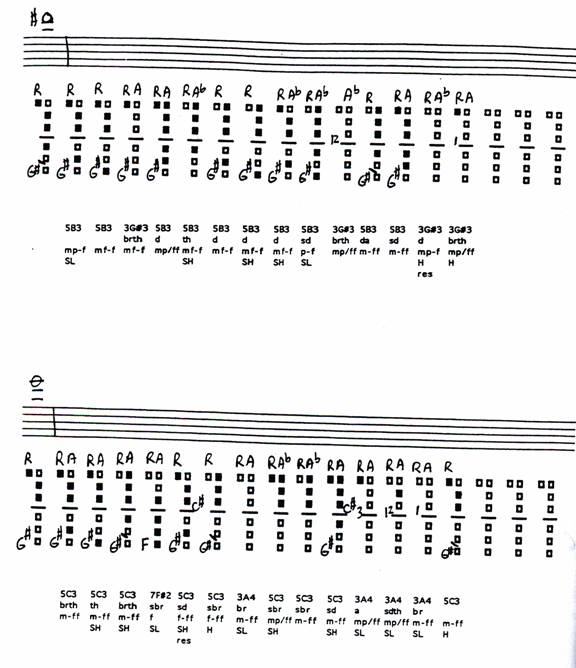| The Clarinet of the Twenty-First Century - E. Michael Richards |
Altissimo Alternate Fingering Chart
The following chart (Table #3) of alternate fingerings contains only a few of the many choices for altissimo register pitches. No unusual techniques are called for, however, such as half-holing, etc. Slight deviations in pitch may exist, but these are easily corrected by adjustments of embouchure and air pressure. These adjustments are no more extreme than those that one would make to play in tune with other performers; they merely require a sensitive "auditory image." Since different players play different equipment, the tuning will be slightly different for each individual. An aspect such as how far a particular pad comes away from a particular tone-hole can be very significant. In the same manner, pitches from the microtone charts may work as alternate fingerings; however, one runs the risk of timbre distortion as one becomes further and further from the pitch of the original fingering.
The annotations under each fingering are arranged according to the following format:
line # information
I - partial of fundamental that fingering is based on - (i.e. - 5C4 = 5th partial of C4)
II - timbre - br = bright; s = slightly; d = dark v = very; th = thin; st = stuffy; a = airy
III - dynamics - pp to ff
IV - intonation - L = low; H = high; S = slightly
V - articulation - res = resistant; difficult to begin immediately; s = slightly
VI - preparation - sm = smooth connection from another pitch possible; tr = trill fingering
Blank fingering grids have been included so that the reader might add his/her own fingerings.
Table #3 (click on pitch/line for mp3)

for information on how to see/hear more altissimo register alternate fingerings, click here
|
||